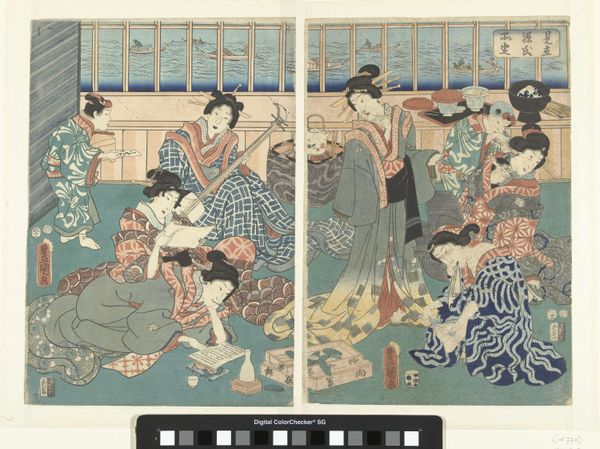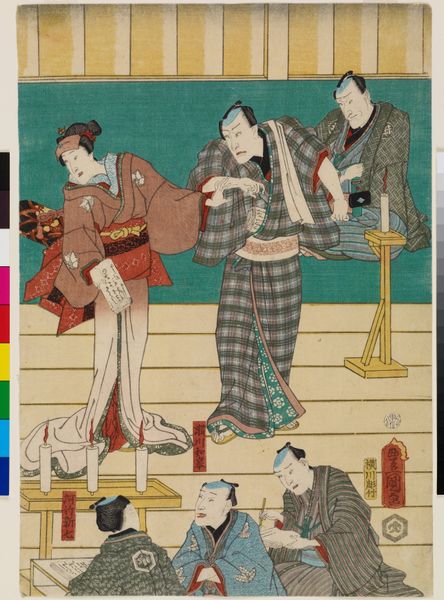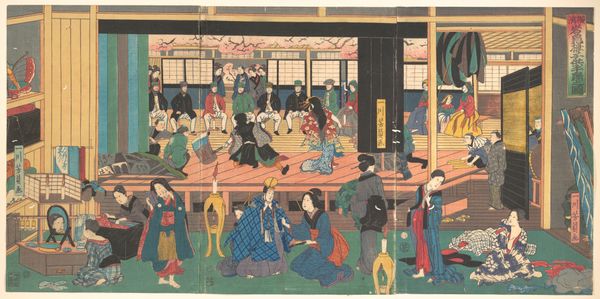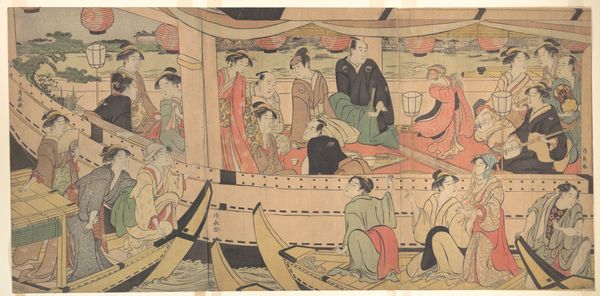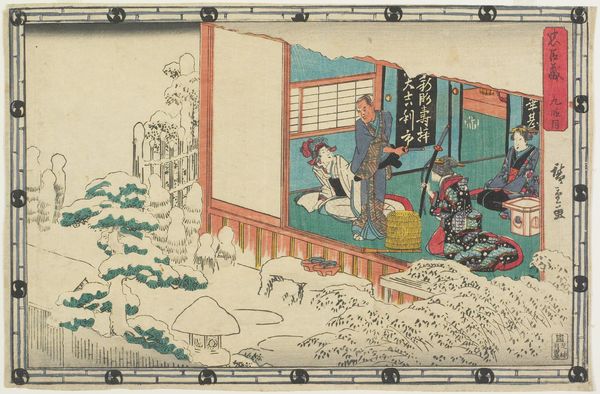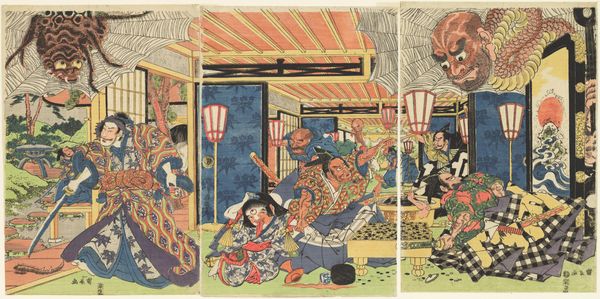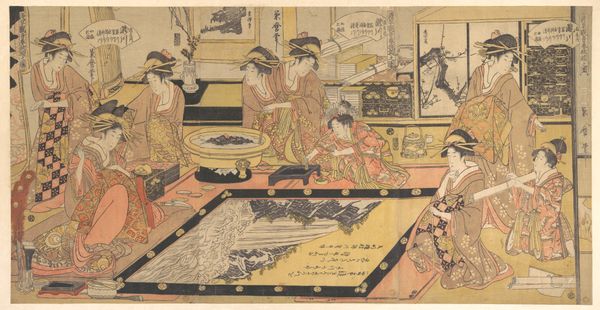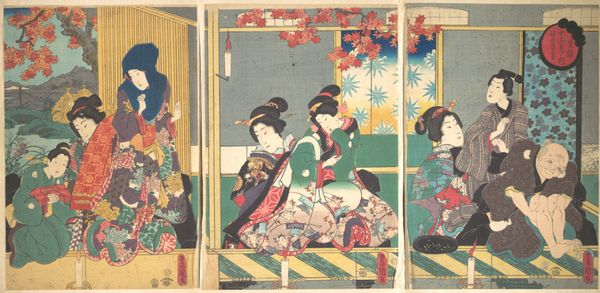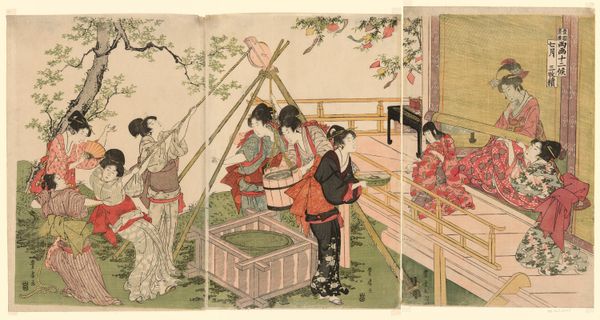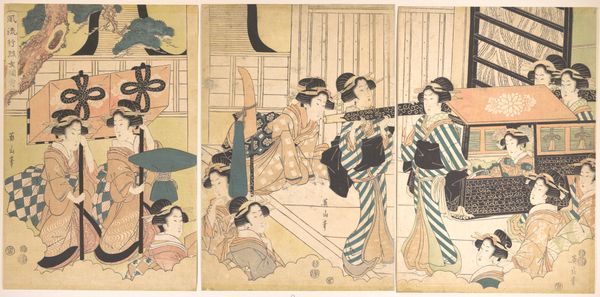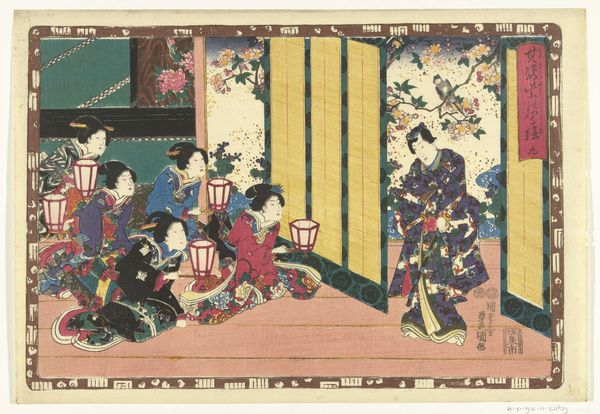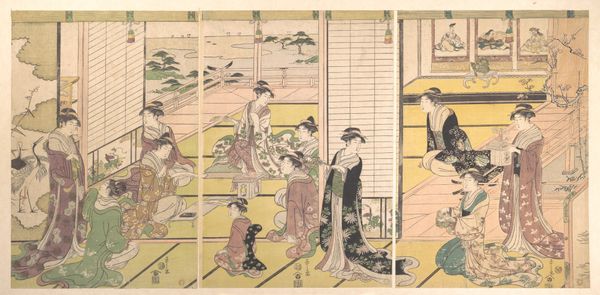
Foreign Business Establishment in Yokohama (Yokohama ijin shōkan uriba no zu) 1861
0:00
0:00
# print
#
asian-art
#
ukiyo-e
#
japan
#
cityscape
#
genre-painting
Dimensions: Image (a): 14 1/2 x 10 in. (36.8 x 25.4 cm) Image (b): 14 1/2 x 10 in. (36.8 x 25.4 cm) Image (c): 14 1/2 x 10 in. (36.8 x 25.4 cm)
Copyright: Public Domain
Editor: This is "Foreign Business Establishment in Yokohama," a color woodblock print made in 1861 by Utagawa Sadahide. There’s so much happening! It’s like stepping into a very busy diorama, and what jumps out to me is just how different all of the figures look in terms of fashion, and how everyone is engaging in their own transactions without any acknowledgement of one another. What's your interpretation of this piece? Curator: It's fascinating how this print encapsulates the complex interactions occurring in Yokohama at this time. What you're observing isn't merely a busy marketplace but a visual record of the clashing cultures and the burgeoning international trade imposed after the opening of Japan. Note how Westerners occupy positions of perceived importance and leisurely engagements like gambling, whereas Japanese figures are rendered almost subservient. It prompts a question about whose perspective is centered here, doesn't it? Editor: That power dynamic is something I hadn’t picked up on initially, I was focused more on the details of the setting! The varied depictions of work feel somewhat class-related. Curator: Exactly. Consider the very existence of this image and who it might have been intended for. This print becomes a commodity itself, offering a controlled glimpse into this "exotic" space. It satisfies a certain curiosity, perhaps even reinforces existing social and political hierarchies. It speaks volumes about how cultural encounters were mediated and consumed. What kind of message would that send to viewers at the time? Editor: Wow, I hadn't considered the print itself as being part of that exchange, as a transaction and form of controlling the narrative, which really frames my perception of it! Curator: It shows how the politics of imagery intersect with art, commerce, and cultural identity in 19th century Japan.
Comments
No comments
Be the first to comment and join the conversation on the ultimate creative platform.
